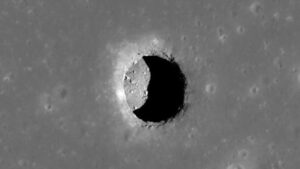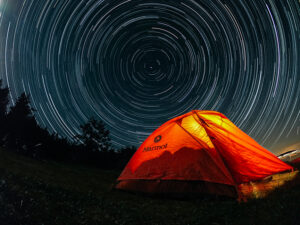Russia has launched its first mission to the moon in 47 years. The Luna-25 lander launched on August 11 from the Vostochny Cosmodrome in eastern Russia. This is an unmanned mission to the Moon’s south pole. The Luna-25 lander hitched a ride on a Soyuz-2 Frigate rocket.
Luna-25 will first orbit the Earth before transferring to a lunar orbit on August 16. It will land on the surface of the moon just north of the Boguslawsky crater a few days later.
For about a year, Russia’s lander will study the composition of the moon’s soil and hunt for the presence of water and its components.
The lander has a four-legged base containing landing rockets and propellant tanks. An upper compartment contains all of the communications equipment, scientific apparatus, computers, and solar panels needed to collect data and send the information back to Earth. A robotic arm will allow the lander to dig to a depth of 50cm.
A new space race
Roscosmos aims to be the first lunar mission to land near the moon’s south pole, but they’ll have some competition. India’s Chandrayann-3 spacecraft launched on July 14 and entered the moon’s orbit on August 5. It is scheduled to land in the same region on August 23.
But Russia’s entry into this unexpected space race has taken a far more direct route to the moon. They expect their lander to set down on August 21. The missions should not interfere with each other as they have different landing zones.
Chandrayaan-3 is significantly heavier than Luna-25, and India launched it using a less powerful rocket. This is one of the reasons it has taken a longer route to the moon. It needed to build up speed orbiting the Earth.
Despite the differences in route and the added excitement of an unplanned “race,” both missions are working towards the same thing. For both countries, data collection is a secondary objective. The primary objective is to test technologies that might bolster future missions.

The Soyuz rocket carrying the Luna-25 lander moves toward the launchpad at the Vostochny Cosmodrome. Photo: Roscosmos
The search for water
The south pole of the moon has become an area of significant interest. Compared to the northern regions of the moon, it is heavily cratered and the light hits it at much steeper angles. With less light, it could contain water ice.
China plans to send a rover to the moon in 2026 and both the U.S. and China want to send manned missions to the region in the coming years and have expressed interest in constructing a permanent base on the surface. The U.S.’s Artemis mission will launch in 2025. It will send the first woman and first person of color to the moon.
The European Space Agency previously partnered with Roscosmos to work on Luna-25. In 2022, the ESA withdrew from the partnership after Russia’s invasion of Ukraine.






